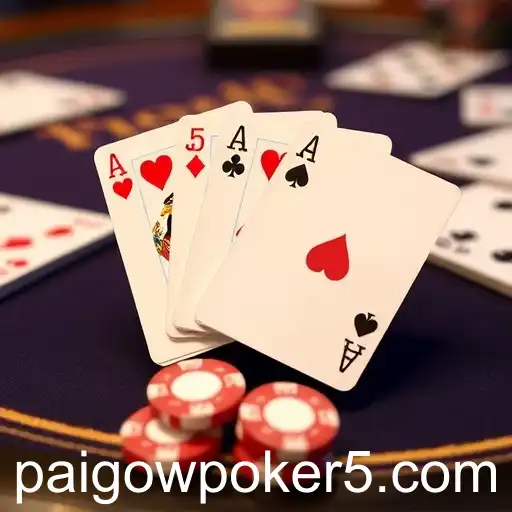pai gow poker | A Comprehensive Dive into the Game History of Pai Gow Poker

Pai Gow Poker, a fascinating blend of Eastern and Western gaming traditions, has captivated players worldwide with its unique gameplay and strategic depth. Originating from the ancient Chinese game of Pai Gow, which means "make nine," this modern adaptation was invented in the early 1980s by Sam Torosian, owner of the Bell Card Club in Los Angeles. With its intriguing rules that borrow elements from both traditional Chinese domino games and contemporary poker, Pai Gow Poker offers a distinctive gambling experience that stands out in the array of card games available today.
The game's name is a nod to its cultural heritage, as it retains the spirit of the original Chinese domino game that dates back to the Song Dynasty. This blending of cultures and mechanics began when Torosian sought to create a game that appealed to both Western card game enthusiasts and those familiar with Asian gaming traditions. His invention was a resounding success, largely due to its ability to offer a leisurely pace combined with the excitement of poker.
Pai Gow Poker is played with a standard 52-card deck plus one joker, which serves as either an ace or a wild card used to complete straights, flushes, and straight flushes. The game’s objective is to create two poker hands from seven cards: a five-card hand and a two-card hand. To win, both hands must beat the dealer's respective hands. This dual-hand challenge adds a layer of strategy and decision-making that keeps players engaged.
The game gained significant popularity in casinos across the United States throughout the 1980s and 1990s, as players were drawn to its low house edge and social table setting. Its appeal is further enhanced by its ability to accommodate multiple players, fostering a communal and interactive environment.
Today, Pai Gow Poker is a staple in casinos worldwide and has made a seamless transition to the online gaming space, where digital platforms offer various adaptations that cater to both traditionalists and modern gamers. Its enduring popularity can be attributed to its strategic depth, cultural richness, and the alluring mix of luck and skill that it demands.
As Pai Gow Poker continues to evolve, embracing digital innovations and expanding into global markets, it remains a testament to the seamless convergence of cultural gaming traditions and the universal appeal of poker. This rich history from its ancient origins to modern application underscores Pai Gow Poker’s unique position in the gaming world, embodying a timeless attraction that transcends generations.



